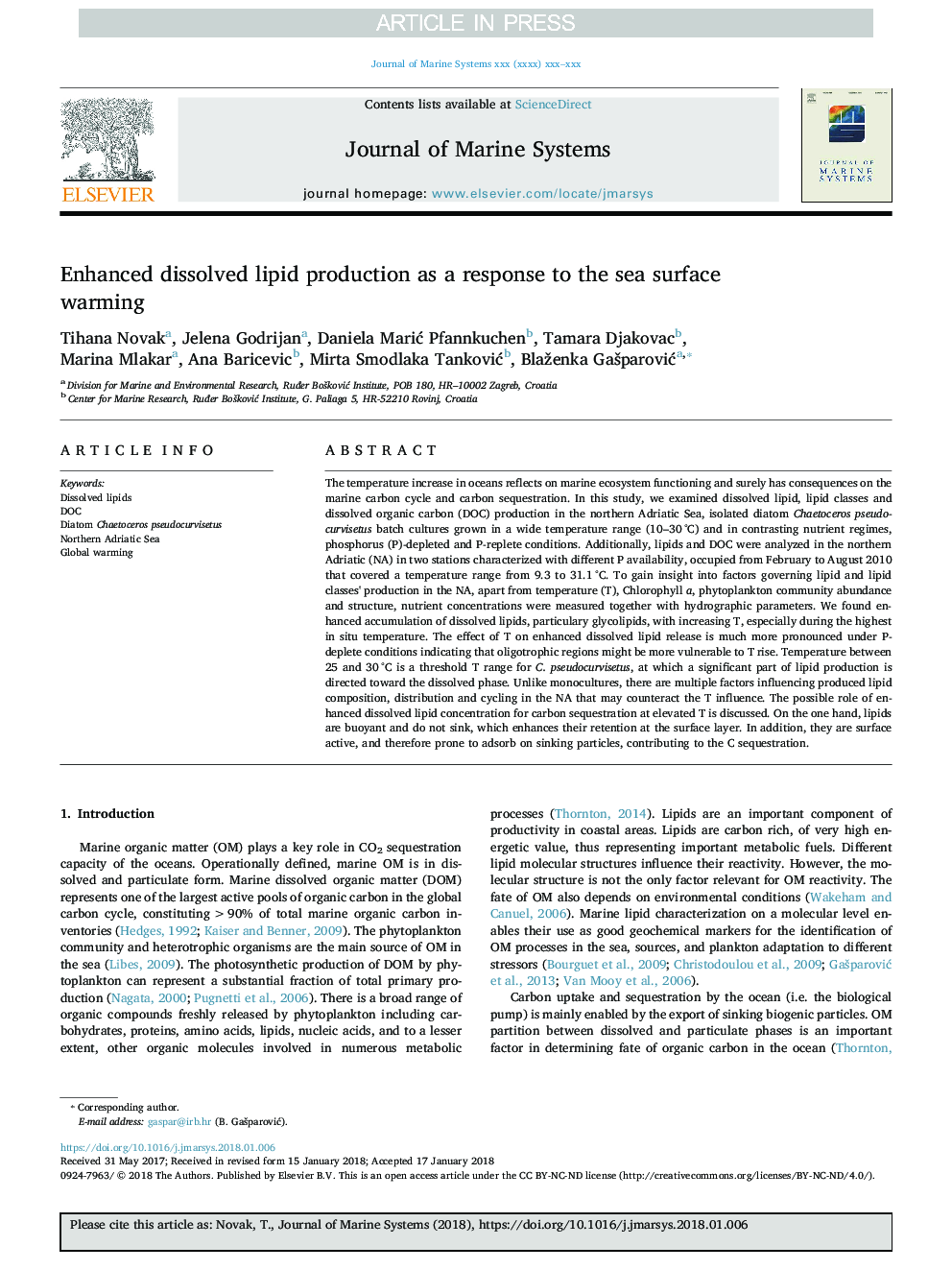| کد مقاله | کد نشریه | سال انتشار | مقاله انگلیسی | نسخه تمام متن |
|---|---|---|---|---|
| 8885987 | 1627250 | 2018 | 10 صفحه PDF | دانلود رایگان |
عنوان انگلیسی مقاله ISI
Enhanced dissolved lipid production as a response to the sea surface warming
ترجمه فارسی عنوان
افزایش تولید چربی های حل شده به عنوان پاسخ به گرم شدن سطح
دانلود مقاله + سفارش ترجمه
دانلود مقاله ISI انگلیسی
رایگان برای ایرانیان
کلمات کلیدی
موضوعات مرتبط
مهندسی و علوم پایه
علوم زمین و سیارات
اقیانوس شناسی
چکیده انگلیسی
The temperature increase in oceans reflects on marine ecosystem functioning and surely has consequences on the marine carbon cycle and carbon sequestration. In this study, we examined dissolved lipid, lipid classes and dissolved organic carbon (DOC) production in the northern Adriatic Sea, isolated diatom Chaetoceros pseudocurvisetus batch cultures grown in a wide temperature range (10-30â¯Â°C) and in contrasting nutrient regimes, phosphorus (P)-depleted and P-replete conditions. Additionally, lipids and DOC were analyzed in the northern Adriatic (NA) in two stations characterized with different P availability, occupied from February to August 2010 that covered a temperature range from 9.3 to 31.1â¯Â°C. To gain insight into factors governing lipid and lipid classes' production in the NA, apart from temperature (T), Chlorophyll a, phytoplankton community abundance and structure, nutrient concentrations were measured together with hydrographic parameters. We found enhanced accumulation of dissolved lipids, particulary glycolipids, with increasing T, especially during the highest in situ temperature. The effect of T on enhanced dissolved lipid release is much more pronounced under P-deplete conditions indicating that oligotrophic regions might be more vulnerable to T rise. Temperature between 25 and 30â¯Â°C is a threshold T range for C. pseudocurvisetus, at which a significant part of lipid production is directed toward the dissolved phase. Unlike monocultures, there are multiple factors influencing produced lipid composition, distribution and cycling in the NA that may counteract the T influence. The possible role of enhanced dissolved lipid concentration for carbon sequestration at elevated T is discussed. On the one hand, lipids are buoyant and do not sink, which enhances their retention at the surface layer. In addition, they are surface active, and therefore prone to adsorb on sinking particles, contributing to the C sequestration.
ناشر
Database: Elsevier - ScienceDirect (ساینس دایرکت)
Journal: Journal of Marine Systems - Volume 180, April 2018, Pages 289-298
Journal: Journal of Marine Systems - Volume 180, April 2018, Pages 289-298
نویسندگان
Tihana Novak, Jelena Godrijan, Daniela MariÄ Pfannkuchen, Tamara Djakovac, Marina Mlakar, Ana Baricevic, Mirta Smodlaka TankoviÄ, Blaženka GaÅ¡paroviÄ,
